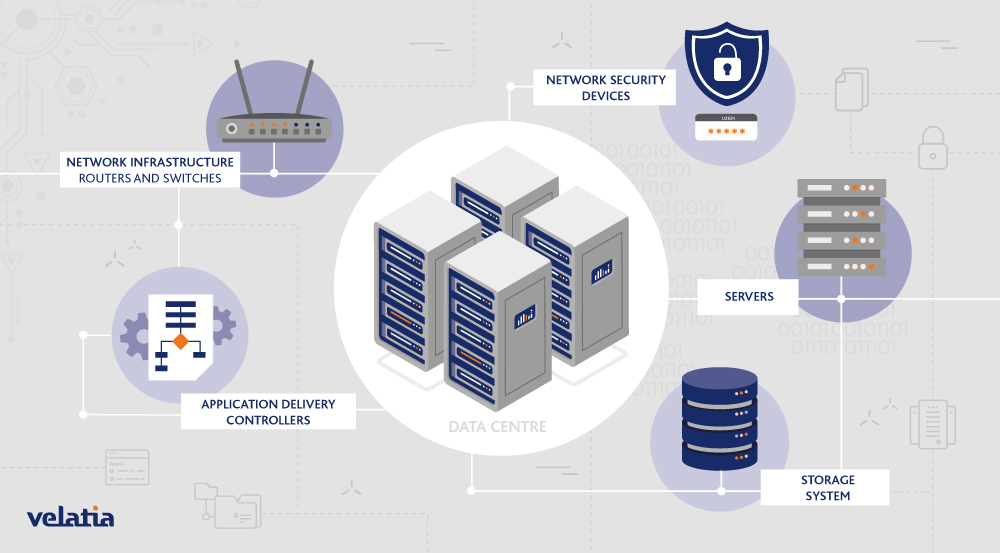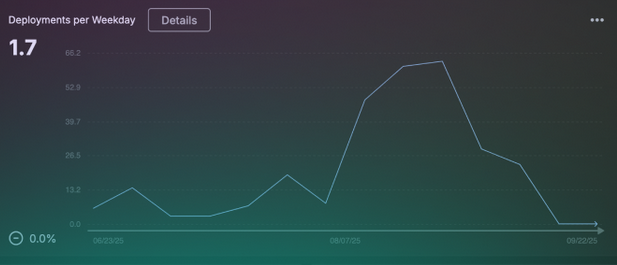Microsoft Supercharges Visual Studio Copilot with Advanced Planning for Complex Tasks
In the rapidly evolving landscape of software development, AI-powered assistants have transformed from novelties into indispensable tools. They excel at completing lines of code, suggesting function implementations, and answering straightforward queries. However, their utility has often hit a wall when faced with the true nature of modern development: complex, multi-step tasks that require deep contextual understanding of an entire codebase. Microsoft is now taking a monumental step to shatter that wall with the public preview of a new planning capability for Copilot in Visual Studio. This groundbreaking feature, running in what Microsoft calls “Agent Mode,” elevates Copilot from a simple code generator to a strategic partner, capable of dissecting complex problems, formulating a transparent plan, and executing it with iterative precision.
This enhancement isn’t merely an incremental update; it represents a fundamental shift in how AI collaborates with developers. By integrating principles from advanced planning research, Microsoft aims to make Copilot more predictable, consistent, and powerful, enabling it to tackle ambitious projects that were previously beyond the scope of AI assistants. For developers, this means less time spent breaking down problems manually and more time focused on high-level architecture and innovation, with a trusted AI partner handling the intricate implementation details.
The Challenge of Complexity in AI-Assisted Development
The promise of AI in software engineering has always been to accelerate development cycles and reduce cognitive load. Tools like GitHub Copilot have been remarkably successful in achieving this at a micro-level. Generating boilerplate code, writing unit tests, or translating a comment into a functional block are tasks where these assistants shine. Yet, the day-to-day reality of a software engineer involves far more than these isolated actions.
Real-world development is about navigating a complex web of interconnected components. A seemingly simple feature request, such as “add a new API endpoint for user profile updates,” can involve:
- Modifying the database schema.
- Updating the data access layer.
- Creating a new service method with business logic.
- Defining a new controller endpoint.
- Implementing validation and error handling.
- Writing integration and unit tests for each layer.
- Updating API documentation.
When a developer presents such a prompt to a traditional AI assistant, the results can be unpredictable. The AI might provide a snippet for one part of the task, ignore others, or generate code that lacks the necessary context of the existing project architecture. This “black box” nature of AI has been a significant hurdle. Developers issue a command and receive an output, but the AI’s reasoning remains opaque. If the generated code is incorrect or incomplete, it’s difficult to understand why it failed, making debugging the AI’s output as time-consuming as writing the code from scratch. This lack of transparency and inability to handle multi-stage logic has confined AI assistants to the role of a tactical tool rather than a strategic ally.
Introducing “Planning” in Visual Studio Copilot: A Paradigm Shift
Microsoft’s new planning capability is designed to address these core limitations head-on. It transforms Copilot into an intelligent agent that can reason about a project, create a strategy, and communicate that strategy to the developer before and during execution.
When Copilot receives a prompt, it first performs an analysis to gauge its complexity. Simple, one-shot requests are handled with a direct, immediate response as before. However, for multi-step, complex tasks, it automatically switches into the new “Agent Mode” and initiates the planning process.
This process is both methodical and transparent:
- Research and Deconstruction: Copilot begins by researching the entire codebase to build a comprehensive understanding of the project’s structure, dependencies, and conventions. It identifies all the files, classes, and methods that will be impacted by the requested change.
- Plan Creation: It then creates a detailed, step-by-step plan outlining how it will tackle the task. This plan is generated in a markdown file, making it fully visible to the developer. The plan might include steps like “Analyze existing user models,” “Create a new method in the
UserService,” “Add a PUT endpoint toUserController,” and “Generate test cases for the new functionality.” - Iterative Execution and Progress Updates: Copilot proceeds to execute each step in the plan sequentially. As it completes each action—whether it’s modifying a file or creating a new one—it updates the markdown file to reflect its progress. This allows the developer to monitor the AI’s work in real-time.
- Dynamic Adjustment: The system is designed to be adaptive. As Copilot works through the steps, it may encounter unforeseen issues or learn more about the codebase. It can dynamically adjust its plan based on this new information, ensuring the final implementation is robust and correct.
Rhea Patel, a product manager at Microsoft, emphasized the significance of this structured approach in a recent announcement.
“Planning makes Copilot more predictable and consistent by giving it a structured way to reason about your project. It builds on techniques from hierarchical and closed-loop planning research – enabling Copilot to plan at a high level, execute step-by-step, and adjust dynamically as it learns more about your codebase and issues encountered during implementation.”
This marks a transition from simple prompt-and-response interactions to a more sophisticated, collaborative workflow where the AI’s thought process is demystified.
How Planning Works Under the Hood
The intelligence behind this new capability stems from established research in artificial intelligence, specifically “hierarchical and closed-loop planning.” Understanding these concepts reveals why this feature is such a significant leap forward.
Hierarchical Planning: This is a strategy for solving complex problems by breaking them down into a hierarchy of goals. Instead of trying to solve a massive problem in one go, the AI first defines a set of high-level objectives. Each of these objectives is then broken down into smaller, more manageable sub-tasks, which are further broken down until they become simple, executable actions. For example, the high-level goal of “refactor the authentication module” is broken down into sub-goals like “separate concerns,” “implement JWT,” and “update dependent services,” which are then decomposed into concrete coding tasks. This structured decomposition allows Copilot to maintain focus and handle intricate dependencies without getting lost.
Closed-Loop Planning: This refers to the ability to use feedback to correct course during execution. In an “open-loop” system, a plan is created and followed blindly, regardless of whether the intermediate steps succeed or fail. In contrast, a “closed-loop” system, like the one now implemented in Copilot, continuously monitors the outcome of its actions. After modifying a piece of code, it can check if the project still compiles or if a relevant test now fails. This feedback loop enables it to catch errors early, reconsider its approach, and revise the remainder of the plan, making it far more resilient and reliable.
By combining these two techniques, Copilot can now approach software development tasks with a level of strategic thinking that mirrors an experienced human developer.
The Tangible Benefits for Developers
The introduction of planning isn’t just a technical achievement; it delivers concrete advantages that will reshape the daily workflow of developers using Visual Studio.
Increased Predictability and Transparency
The “black box” problem has been one of the biggest barriers to trusting AI for critical tasks. The new planning capability replaces this opacity with complete transparency. By presenting its step-by-step plan in a markdown file, Copilot allows developers to review, validate, and even correct its strategy before a single line of code is changed. This insight into the AI’s “thought process” builds confidence and transforms the relationship from one of a user and a tool to one of two collaborators working towards a common goal.
Enhanced Success on Complex Tasks
A structured plan naturally leads to better outcomes. Microsoft’s initial testing has already demonstrated significant performance gains. When equipped with the planning capability, advanced models showed marked improvement in their ability to successfully resolve complex development tasks.
| Performance Metric | Improvement with Planning Enabled |
|---|---|
| Overall Task Success Rate | 15% Higher |
| Number of Tasks Resolved | 20% More |
These metrics confirm that planning enables Copilot to move beyond simple code generation and successfully tackle large-scale refactoring projects, the implementation of new end-to-end features, and complex debugging scenarios that were previously out of reach.
Improved Consistency and Reliability
By adopting a structured, methodical approach, Copilot’s output becomes far more consistent. The randomness often associated with generative AI is minimized because its actions are guided by a logical plan. This reliability ensures that developers can depend on Copilot to perform complex tasks in a predictable manner, saving time and reducing the frustration of dealing with erratic AI behavior.
The Future of Planning-Driven Development
Microsoft views this public preview as a foundational milestone. As Patel noted, this announcement “marks the foundation of planning-driven development in Visual Studio.” The team is already focused on several key areas for future enhancement, which will make the planning agent even more powerful:
- Smarter Caching: To accelerate the planning phase, Copilot will be able to cache its analysis of a codebase. This means it won’t need to re-scan the entire project from scratch for every new task, allowing it to generate plans much faster for subsequent, related requests.
- Refined Reasoning: The underlying AI models will be continuously improved to create more optimal and efficient plans. This includes a deeper understanding of software architecture, design patterns, performance considerations, and security best practices, leading to higher-quality code generation.
- Deeper Project Context: Future iterations will likely integrate Copilot with a wider range of development tools. Imagine Copilot reading a user story from Azure DevOps or a bug report from Jira, analyzing the associated documentation, and then formulating a comprehensive implementation plan based on that rich context. This would further bridge the gap between high-level requirements and low-level code.
Getting Started with Copilot’s Planning Capability
Developers eager to experience this next-generation AI assistance can enable the feature in the latest versions of Visual Studio.
Prerequisites:
- Visual Studio 2022 version 17.14 or a more recent version.
- Visual Studio 2026 Insiders.
Activation Steps:
- In Visual Studio, navigate to the menu bar and select
Tools > Options. - In the Options dialog, find and select
Copilotin the left-hand pane. - Check the box next to the option labeled
Enable Planning.
As this is a public preview, Microsoft is encouraging users to test the feature on a variety of complex tasks and provide feedback to help shape its future development.
Conclusion: The Dawn of the AI Strategic Partner
The introduction of the planning capability in Visual Studio Copilot is more than just an enhancement—it’s a redefinition of what a developer’s AI assistant can be. By moving beyond tactical code completion to strategic task planning and execution, Microsoft is empowering developers to offload more of the implementation burden and focus their creative energy on solving bigger problems. The emphasis on transparency, predictability, and iterative execution builds a foundation of trust, transforming Copilot into a true collaborator. This is a pivotal moment in the journey of AI-assisted development, heralding an era where developers and AI work together not just line by line, but plan by plan, to build the software of the future.








Comments